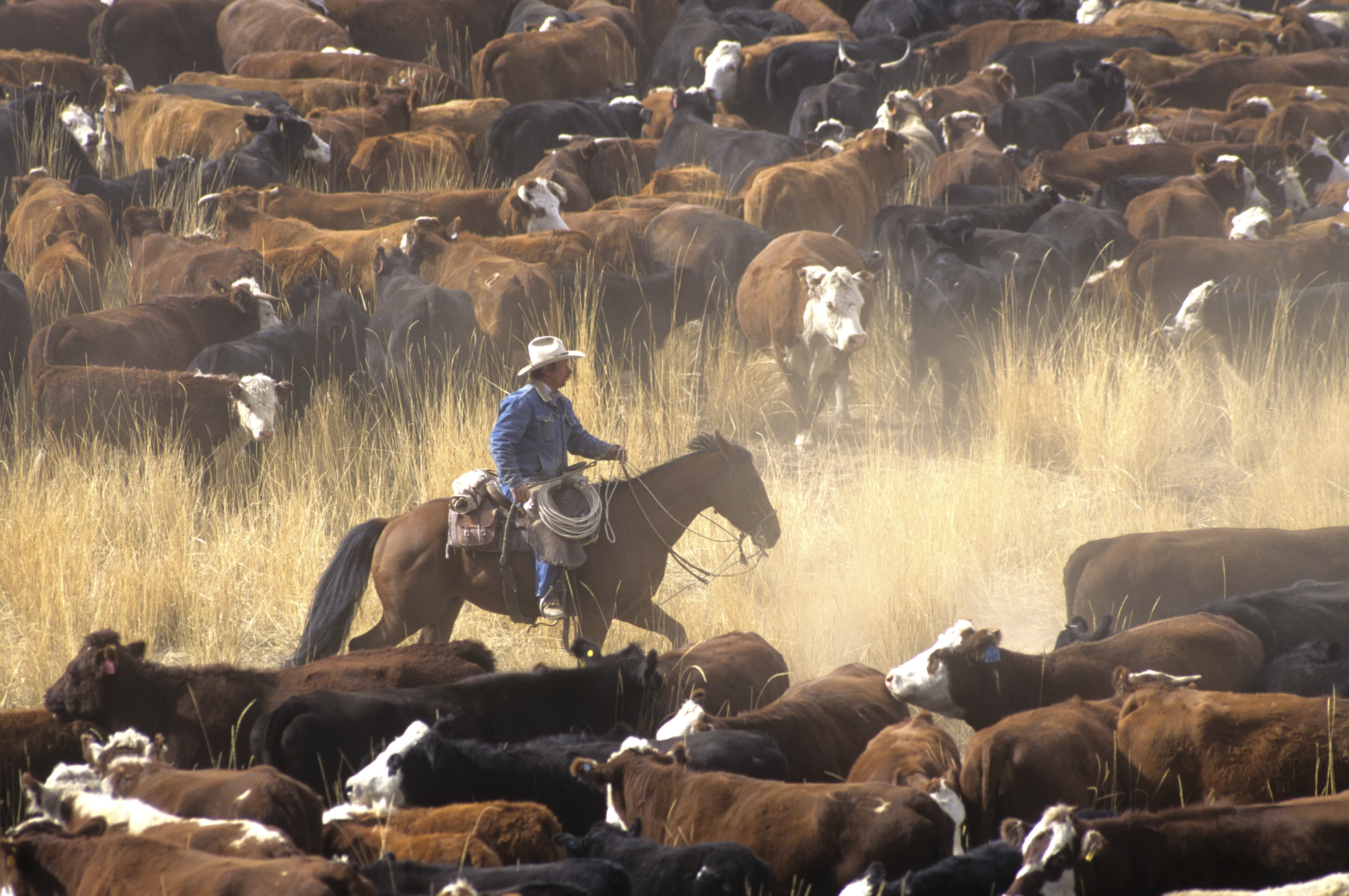
Ag stats: Colorado crop progress and condition report – week ending July 26, 2020
Hot and dry weather pushed winter wheat harvest to completion in several areas across the state last week, according to the Mountain Region Field Office of the National Agricultural Statistics Service, USDA. Statewide, winter wheat harvest was 97 percent complete, compared to 76 percent last year and 88 percent on average.
In northeastern counties, winter wheat harvest continued and wrapped up in several areas. Isolated precipitation was received in some localities while others remained dry. County reports mentioned irrigated crops were progressing quickly, but concern was noted regarding continued irrigation water supplies through the end of the season. Non-irrigated crop and pasture conditions continued to decline where no moisture was received. County reports indicated non-irrigated spring crops were near the point of failure unless good moisture is received. Livestock producers continued to assess current conditions and seek alternate grazing arrangements due to limited native pasture growth and dormancy from drought.
In east central counties, hot and extremely dry weather persisted throughout most of the district. Isolated thunderstorms in eastern Yuma county July 23 and July 24 brought extremely heavy precipitation and flash flooding to areas. Conditions in areas without needed precipitation continued to steadily decline. According to the latest U.S. Drought Monitor report, extreme drought conditions continued to march north in the district.
Southwestern counties saw the benefit from recent precipitation as conditions improved for non-irrigated crops, specifically dry beans.
In the San Luis Valley, precipitation was received last week and delayed the second cutting of alfalfa. County reports noted upwards of 2 inches of rain was received over the last week. Isolated flooding was also reported. Barley was notably maturing quickly, and harvest was imminent.
In southeastern counties, isolated precipitation was also received. Recent rain greatly improved native pasture conditions and better growth was noted.
Statewide, stored feed supplies were rated 5 percent very short, 20 percent short, 73 percent adequate, and 2 percent surplus.
Sheep death loss was 64 percent average and 36 percent light.
Cattle death loss was 89 percent average and 11 percent light.
CROP AND LIVESTOCK PROGRESS | ||||
Commodity | Current week | Previous week | Previous year | 5-year average |
(percent) | (percent) | (percent) | (percent) | |
Alfalfa hay | ||||
2nd cutting harvested | 62 | 45 | 53 | 61 |
3rd cutting harvested | 4 | 1 | 1 | 3 |
Barley | ||||
Turning color | 87 | 26 | 57 | 60 |
Corn | ||||
Silked | 70 | 35 | 44 | 47 |
Doughed | 6 | 3 | 1 | 1 |
Dry edible beans | ||||
Blooming | 41 | 24 | 38 | 51 |
Sorghum | ||||
Emerged | 99 | 94 | NA | NA |
Headed | 21 | 2 | 13 | 20 |
Winter wheat | ||||
Harvested | 97 | 92 | 76 | 88 |
DAYS SUITABLE FOR FIELDWORK AND SOIL MOISTURE CONDITION | ||||
Current week | Previous week | Previous year | 5-year average | |
Days suitable for fieldwork | 6.5 | 6.6 | 6.3 | 5.8 |
Topsoil moisture | (percent) | (percent) | (percent) | (percent) |
Very short | 27 | 34 | 5 | 5 |
Short | 40 | 37 | 18 | 23 |
Adequate | 32 | 29 | 74 | 68 |
Surplus. | 1 | -- | 3 | 4 |
Subsoil moisture | ||||
Very short | 31 | 32 | 3 | 5 |
Short | 39 | 42 | 17 | 21 |
Adequate | 29 | 26 | 76 | 71 |
Surplus. | 1 | -- | 4 | 3 |
CROP, LIVESTOCK, PASTURE AND RANGE CONDITION | ||||
Commodity | Current week | Previous week | Previous year | 5-year average |
(percent) | (percent) | (percent) | (percent) | |
Alfalfa hay | ||||
Very poor | 6 | 6 | 3 | 2 |
Poor | 11 | 9 | 4 | 7 |
Fair | 17 | 25 | 7 | 21 |
Good | 56 | 53 | 67 | 56 |
Excellent | 10 | 7 | 19 | 14 |
Barley | ||||
Very poor | -- | -- | 2 | -- |
Poor | 1 | 1 | 5 | 1 |
Fair | 18 | 22 | 17 | 19 |
Good | 60 | 51 | 51 | 54 |
Excellent | 21 | 26 | 25 | 26 |
Corn | ||||
Very poor | 11 | 9 | -- | 2 |
Poor | 17 | 14 | 1 | 4 |
Fair | 31 | 36 | 19 | 20 |
Good | 34 | 36 | 70 | 62 |
Excellent | 7 | 5 | 10 | 12 |
Dry edible beans | ||||
Very poor | 4 | 17 | -- | 2 |
Poor | 20 | 20 | 2 | 8 |
Fair | 32 | 33 | 19 | 22 |
Good | 43 | 29 | 74 | 59 |
Excellent | 1 | 1 | 5 | 9 |
Onions | ||||
Very poor | 3 | 2 | -- | 1 |
Poor | 5 | 5 | -- | 2 |
Fair | 23 | 30 | 11 | 15 |
Good | 64 | 59 | 85 | 67 |
Excellent | 5 | 4 | 4 | 15 |
Pasture and range | ||||
Very poor | 15 | 24 | 1 | 6 |
Poor | 25 | 24 | 4 | 11 |
Fair | 35 | 32 | 21 | 25 |
Good | 24 | 20 | 64 | 49 |
Excellent | 1 | -- | 10 | 9 |
Potatoes inside San Luis Valley | ||||
Very poor | 1 | -- | -- | -- |
Poor | 3 | -- | 4 | 3 |
Fair | 11 | 7 | 34 | 19 |
Good | 58 | 65 | 44 | 55 |
Excellent | 27 | 28 | 18 | 23 |
Potatoes outside San Luis Valley | ||||
Very poor | 2 | 2 | -- | -- |
Poor | 6 | 4 | 1 | 1 |
Fair | 23 | 20 | 17 | 9 |
Good | 57 | 54 | 68 | 74 |
Excellent | 12 | 20 | 14 | 16 |
Sorghum | ||||
Very poor | 8 | 8 | 1 | 4 |
Poor | 20 | 21 | 1 | 5 |
Fair | 45 | 48 | 24 | 27 |
Good | 21 | 19 | 69 | 60 |
Excellent | 6 | 4 | 5 | 4 |
Sugarbeets | ||||
Very poor | 3 | 3 | -- | -- |
Poor | 8 | 13 | -- | 3 |
Fair | 25 | 27 | 14 | 14 |
Good | 54 | 47 | 78 | 66 |
Excellent | 10 | 10 | 8 | 17 |
Sunflowers | ||||
Very poor | 4 | 4 | -- | -- |
Poor | 24 | 12 | -- | 1 |
Fair | 56 | 57 | 20 | 24 |
Good | 15 | 25 | 76 | 66 |
Excellent | 1 | 2 | 4 | 9 |
Livestock | ||||
Very poor | 2 | 2 | -- | -- |
Poor | 7 | 8 | 2 | 2 |
Fair | 23 | 22 | 11 | 12 |
Good | 58 | 59 | 72 | 74 |
Excellent | 10 | 9 | 15 | 12 |
















